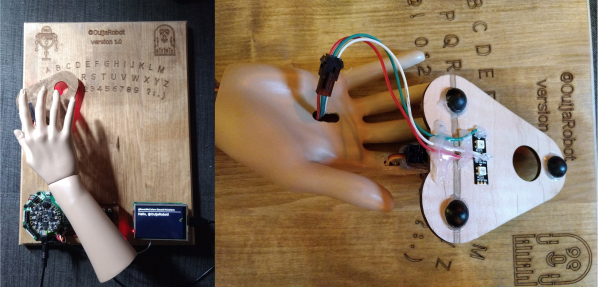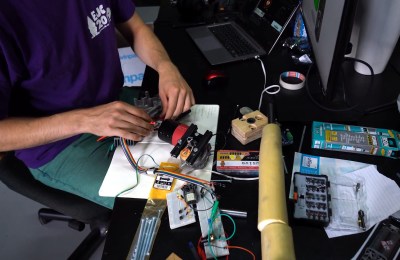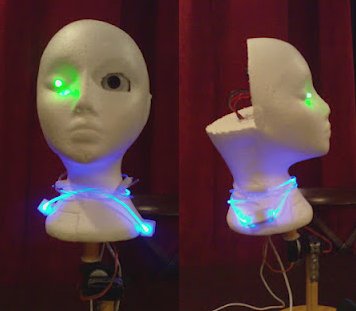When you’re a kid, nothing says spooky like turning off the lights and bringing out the Ouija board. For decades, this mystifying oracle has purported to channel the dead by spelling out messages using a board with numbers, letters, yes/no, and a heart-shaped windowed bit of plastic called a planchette.
 While the action of a standard Ouija board owes itself to something called the ideomotor phenomenon, this motorized Ouija robot by [Ronald McCollum] is powered by tweets.
While the action of a standard Ouija board owes itself to something called the ideomotor phenomenon, this motorized Ouija robot by [Ronald McCollum] is powered by tweets.
That’s right, the mannequin hand uses the planchette to spell out the tweets with a rather crisp snap of the wrist. [Ronald] impressively coded all the positions by hand, with each letter being comprised of both a hand position and planchette position.
This project utilizes both an Adafruit Crickit board and a Raspberry Pi, mostly because [Ronald] wanted to use the Crickit for something, and added the Pi to spell out the tweets on the display in real time. Check it out in action after the break, and stick around for a bonus video of the numbers being laser-cut.
Speaking of creepy motion, here’s a refrigerator clock that uses those colorful alphanumeric magnets.
Continue reading “2023 Halloween Hackfest: Ouija Robot Is Even Creepier Than The Real Thing”


















